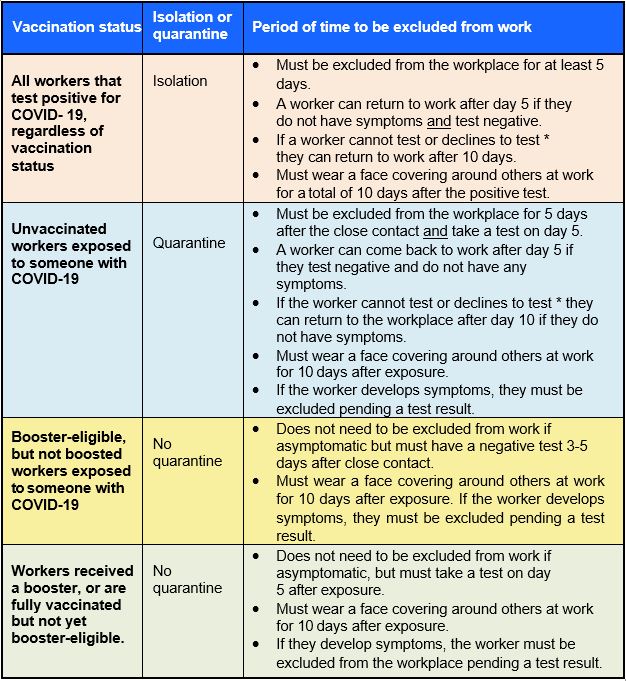On January 14, 2022, Cal/OSHA published a Fact Sheet (updated January 19, 2022) and updated its FAQs regarding its COVID-19 Emergency Temporary Standards (the “ETS”) to incorporate:
- The December 30, 2021 guidance from the California Department of Public Health (“CDPH”) (updated January 8, 2022) on isolation and quarantine periods, and
- The ETS Revisions adopted by the Cal/OSHA Board on December 16, 2021, which became effective January 14, 2022.
See our previous post here, regarding Cal/OSHA’s update to its FAQs.
The updated publications include the following revisions:
- Some definitions in the ETS were updated as follows:
- “Worksite” now excludes an employee’s personal residence, locations where an employee works alone, and remote work locations chosen by the employee.
- “COVID-19 test” now includes specific instructions for workers using a test at home with self-read results. The employer or a telehealth professional must observe the test results.
- “Face coverings” was updated to include more specific detail on the different types of face coverings that are acceptable. “Tightly woven fabric or non-woven material of at least two layers that do not let light pass through when held up to a light source” are a suggested benchmark.
- “Fully vaccinated,” now includes the minimal amount of time workers need to wait between the first and second shot of a two-dose vaccine.
- Employers must make COVID-19 testing available to fully vaccinated employees after close contact, even if they are asymptomatic.
- Revised instructions on how to notify workers who were at the same worksite as the COVID-19 case during the high-risk exposure period. Employers must continue to notify employees of possible COVID-19 exposures within one business day.
- Employees who are exempt from wearing a face covering due to a medical or mental health condition must physically distance at least 6 feet from others and either be fully vaccinated or tested weekly.
- Employers must now make weekly testing available for outbreaks, or twice-weekly testing for major outbreaks available to asymptomatic fully vaccinated employees who were exposed.
- Return-to-work guidelines have been updated to align with the new California Department of Public Health (CDPH) isolation and quarantine periods guidance from January 6, 2022, which supersedes the Cal/OSHA COVID-19 Prevention Emergency Temporary Standards in certain circumstances, as follows:

* An employer may require a test. More information is available in the Department of Fair Employment and Housing FAQ.
As additional guidance is issued, we will keep you informed.